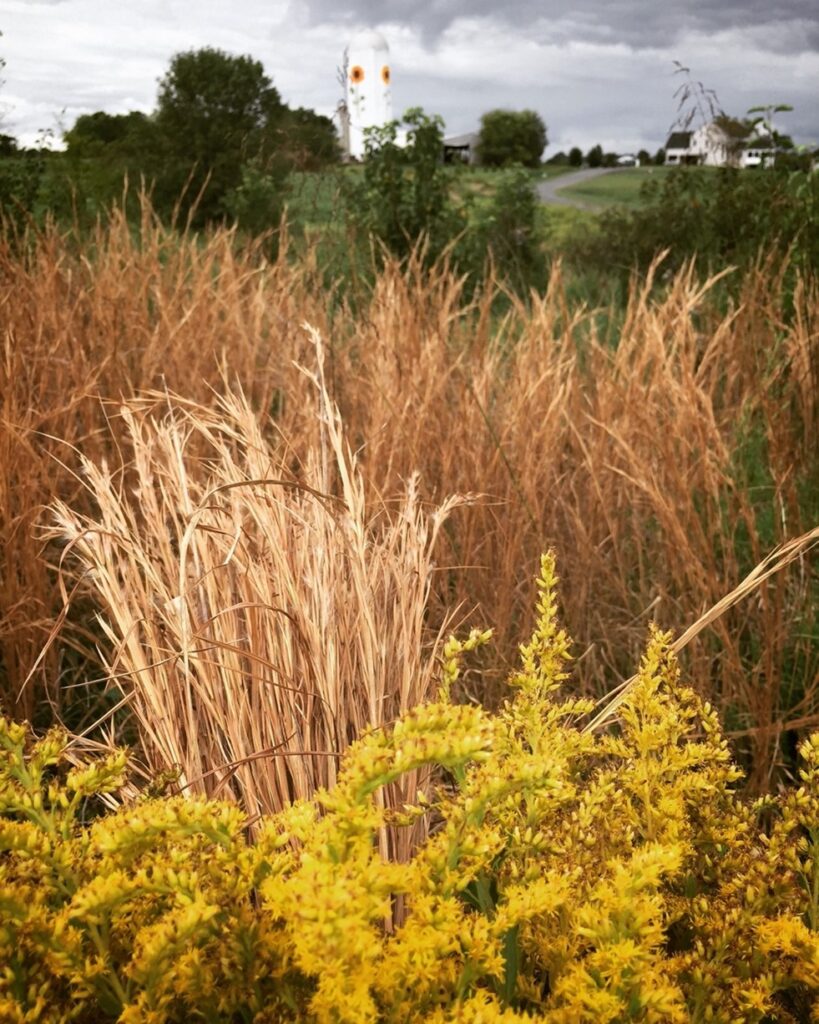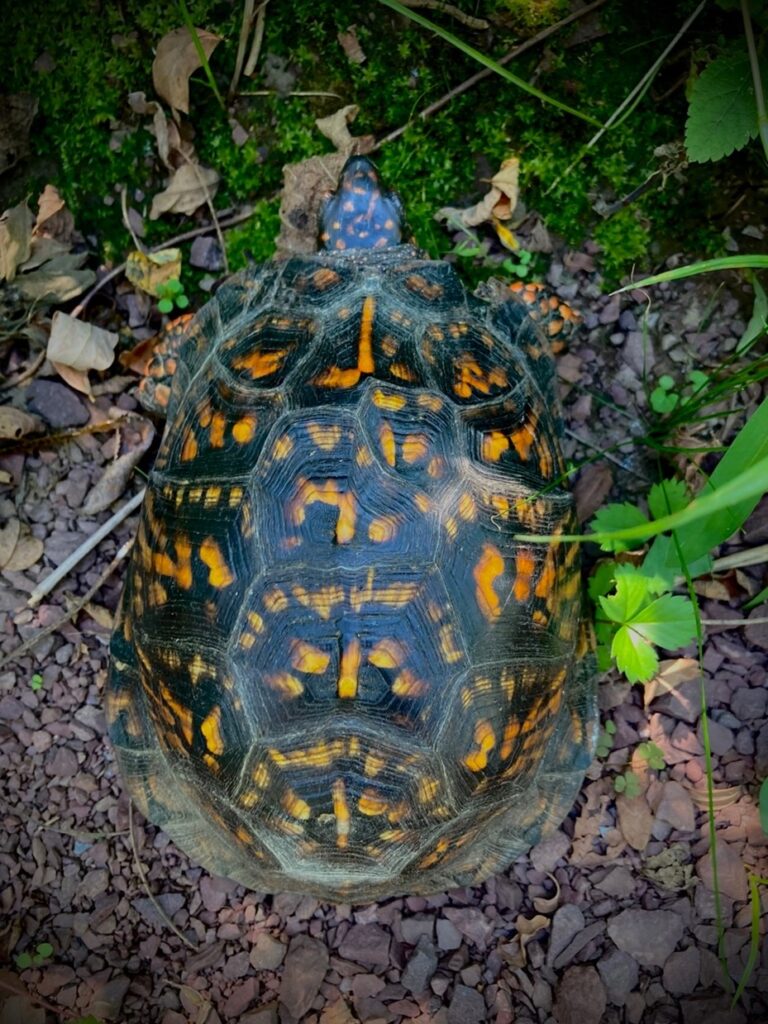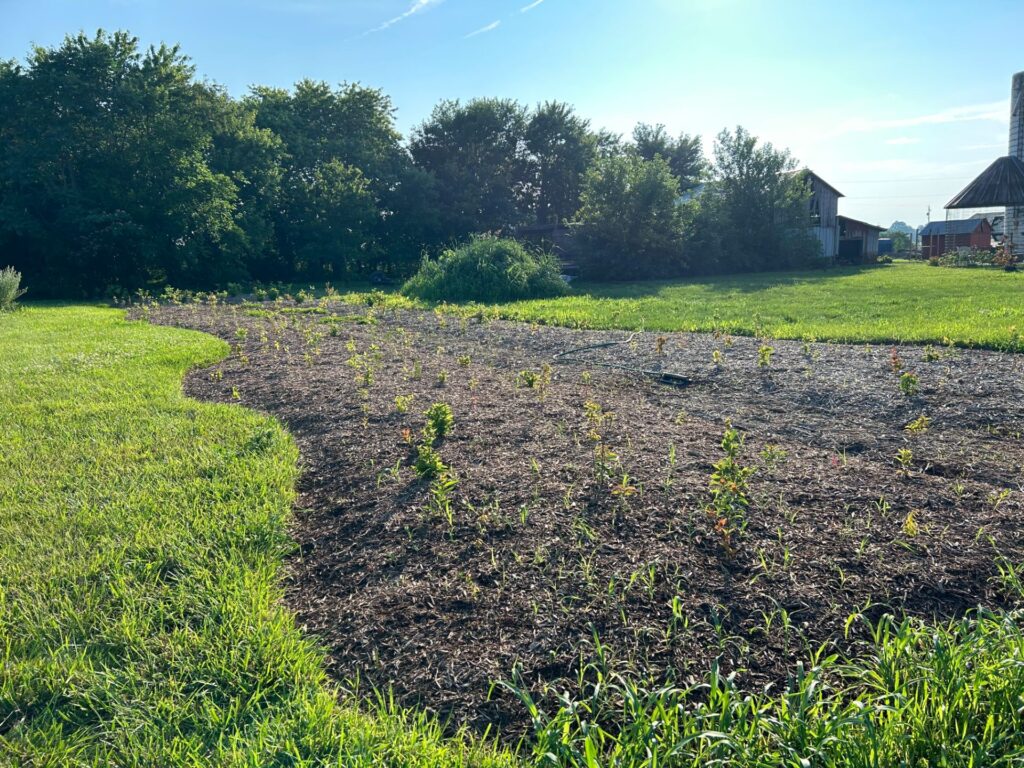The urban sprawl that comprises Northern Virginia residential areas are often planned with lawns and landscape ornamental plants from outside the eastern U.S. Although these plants with non-native origins may provide privacy and aesthetic appeal for the current generation, there are concerns amongst some about the sustainability of these choices. We are considering climate and environmental impacts now more than ever before, even in our backyards.
Are you interested in landscaping for the future with a mini native forest? Read below to see why you should select natives and how we planted a mini-forest.

Why natives?
- Natives attract wildlife and pollinators, such as birds, bees and butterflies that are familiar with this region and provides an essential habitat during growth or mating seasons. After planting natives you may notice more biodiversity and the wildlife in your backyard can be transporters of viable and invaluable seeds.
- Natives can save time and money. If you plant natives, they often require less water and fertilizer that other non-native plants. Another benefit is harmful pests are usually not an issue for most natives. Once plants are well established with the native soil, you can be hands-off for longer periods of time and less intervention is necessary to maintain the overall health.
- Natives grasses and other plants can help with stream restoration projects. Native plants are often chosen and planted densely alongside boulders and logs near small bodies of water to slow run-off from nearby urban areas and restore the health of small natural streams.

How we planted a mini-forest

To get started, we found an area in full sun/open space. The area was less than 2500 square feet. We tested the soil to ensure it was the native soil, slightly acidic with proper nutrient levels. You can have your soil tested by a company or seek assistance from your local Cooperative Extension office.
Next, we found about 20 native plant species and acquired 400 trees and shrubs that would comprise the canopy, sub-tree, and shrub layers. Native tree saplings around 2 feet would have been ideal but it wasn’t always available. For large-scale plantings it is important to source plants well in advance.
We had a planting party shortly after getting the 400 plants and planted this past spring in April 2023. We came prepared with the necessary equipment, tools, and water. We excavated about a foot and amended the clay oil with compost and spread mulch over the amended soil before planting the small saplings. Deep watering was needed after transplanting the saplings. Monitoring, watering and manual weed removal is necessary for a year or more while trees establish roots in their forever home.
Re-forestation plantings are a great way to benefit future generations. It can provide natural habitat for native wildlife, reduces our carbon footprint, and helps minimize noise and air pollution. Planting a mini-forest can also provide a natural privacy screen down the road. If you need assistance with planting a mini-forest and explaining the necessary after-care for the forest to thrive, a dedicated professional from Northern Virginia Landscaping can help.

